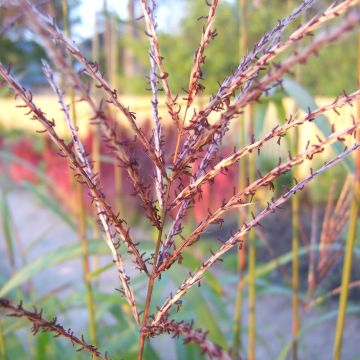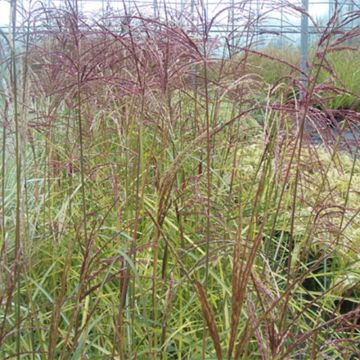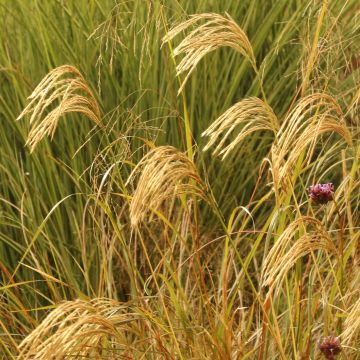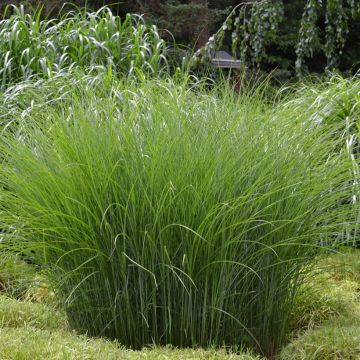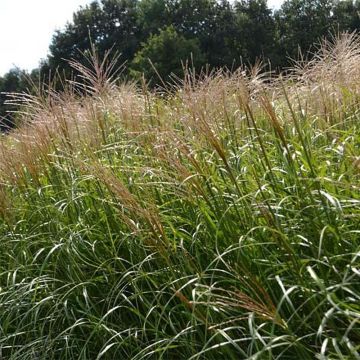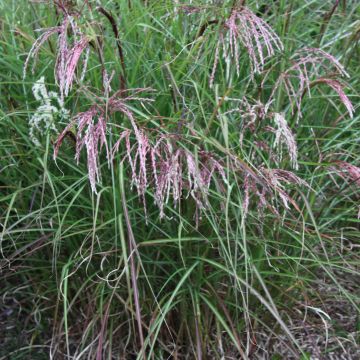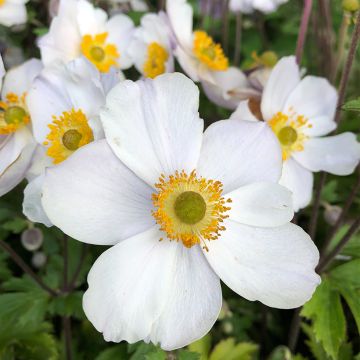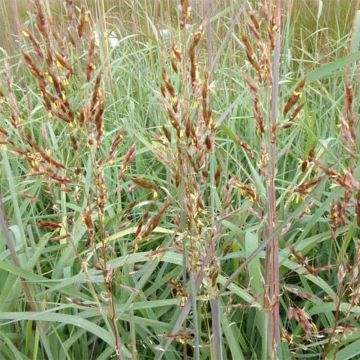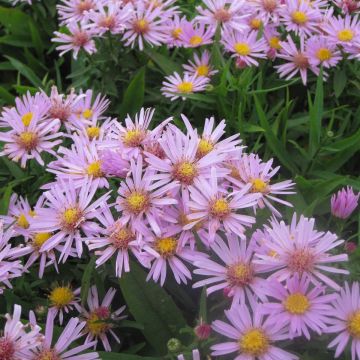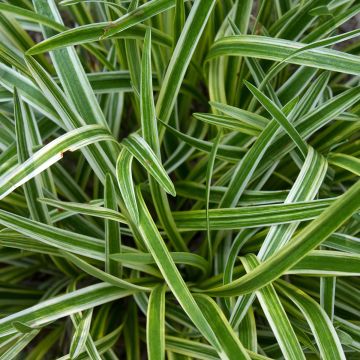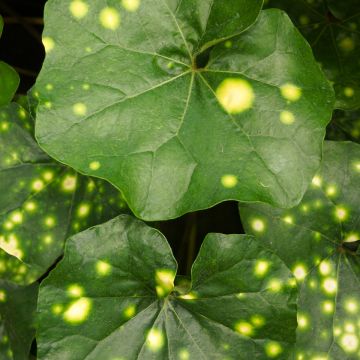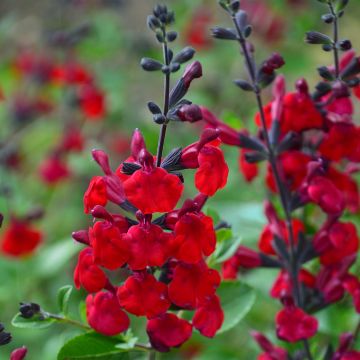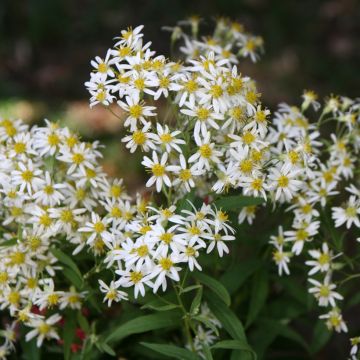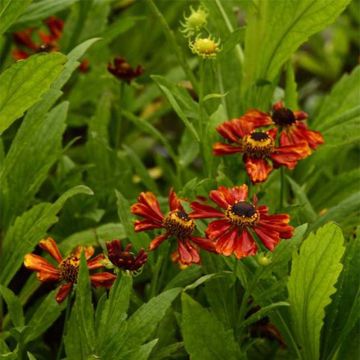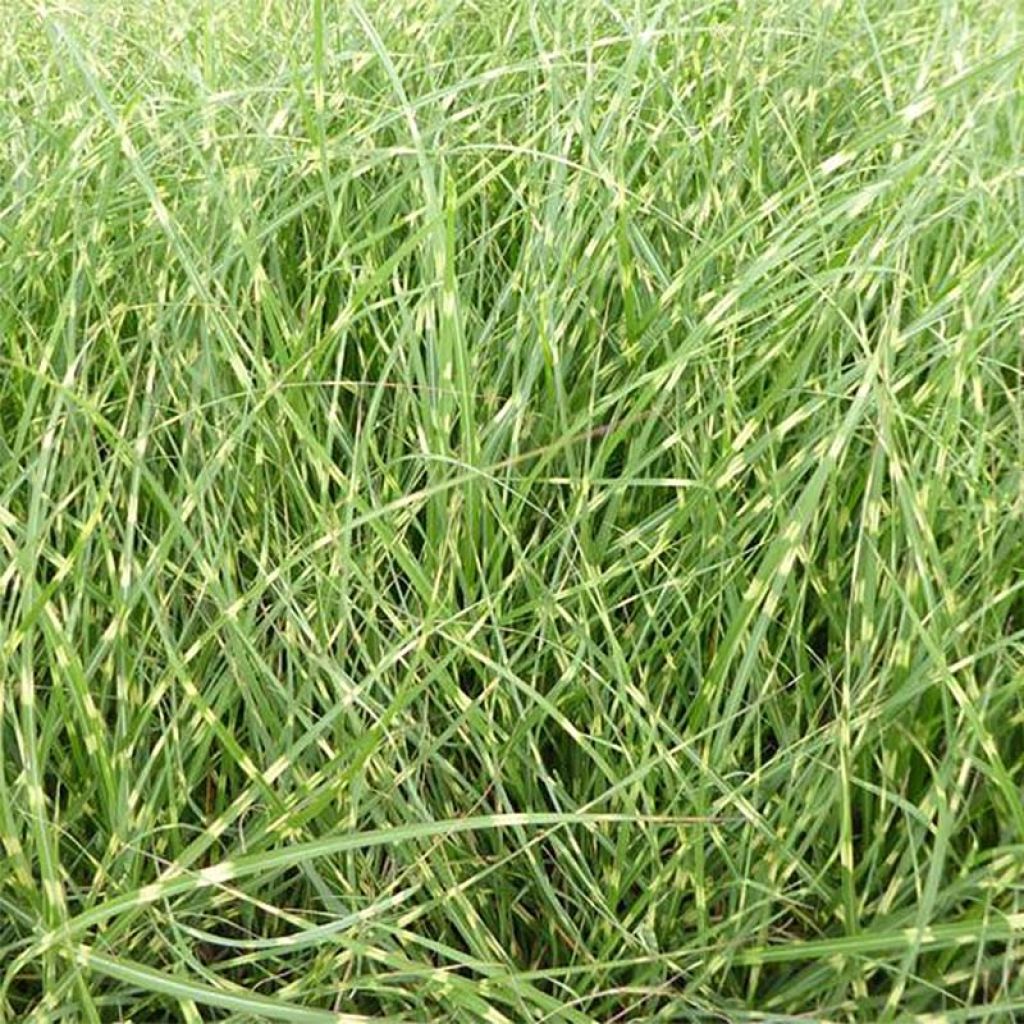

Miscanthus sinensis Strictus Dwarf - Silvergrass
Miscanthus sinensis Strictus Dwarf - Silvergrass
Miscanthus sinensis Strictus Dwarf
Eulalia, Porcupine Grass, Chinese silver Grass, Maiden Grass, Zebra Grass, Susuki Grass
This item cannot be shipped to the selected country
Delivery charge from €5.90
Delivery charge from €5.90
Delivery charge from €5.90
More information
Schedule delivery date,
and select date in basket
This plant carries a 12 months recovery warranty
More information
We guarantee the quality of our plants for a full growing cycle, and will replace at our expense any plant that fails to recover under normal climatic and planting conditions.
From €5.90 for pickup delivery and €6.90 for home delivery
Express home delivery from €8.90.
From €5.90 for pickup delivery and €6.90 for home delivery
Express home delivery from €8.90.
From €5.90 for pickup delivery and €6.90 for home delivery
Express home delivery from €8.90.
Does this plant fit my garden?
Set up your Plantfit profile →
Description
Miscanthus sinensis 'Strictus Dwarf', also known as Miscanthus sinensis 'Strictus Compactus', is a low and compact form of M. 'Strictus',, appreciated for its yellow and light green striped foliage and its upright and narrow habit. The sun shines through its narrow leaves, creating small pale-yellow and green stripes, giving this grass an exceptional decorative aspect. It can grow in flower beds and in pots on a patio or balcony. Its inflorescences appear in late summer, in purple-pink panicles, turning white-cream when mature. Original and intensely bright, this little Chinese reed will easily integrate into any contemporary or naturalistic inspired decor. Somewhat slow to establish, this lovely plant thrives in warm and sunny locations, in ordinary soil that retains moisture.
Miscanthus sinensis 'Strictus Dwarf' belongs to the Poaceae family. Its ancestor is native to China and Japan (in the pan-Himalayan region up to 2000m (6562ft) altitude). This perennial and clump-forming grass, with short rhizomes, forms over time a tuft with an upright and trailing habit, reaching a height of no more than 1m (3ft), with a spread of about 60cm (24in). Its rhizomes do not creep, meaning this clump-forming plant is not invasive. The leaves are thin, narrow, long, and flexible, ranging from light green to medium green, horizontally striped with pale-yellow. Long floral stems emerge from the foliage from September to November, in the form of silky digitate spikes, about 15 to 20cm (6 to 8in) long. They are a purple-pink colour. As they fade, they take on a silvery beige to brownish hue. The plumes consist of tiny pinkish flowers that close a little after opening, only to reopen when mature. They then take on a paler and fluffier appearance. Its growth is quite slow, but it eventually becomes spectacular.
The variegated dwarf Chinese reed is a bright and space-saving plant, ideal for ornamenting contemporary patios and minimalist style flower beds. It has deciduous foliage, but remains decorative for much of the winter. It can be planted in flower beds alongside tall asters, perpetual roses, or dwarf conifers, which are very complementary. It has its place in modern gardens with clean lines, alongside bamboo or ferns if the soil is moist. Miscanthus softens the concrete structures of urban developments. It can also be planted in well-drained soil near water features, alongside phalaris or crocosmias, for example.
Report an error about the product description
Miscanthus sinensis Strictus Dwarf - Silvergrass in pictures
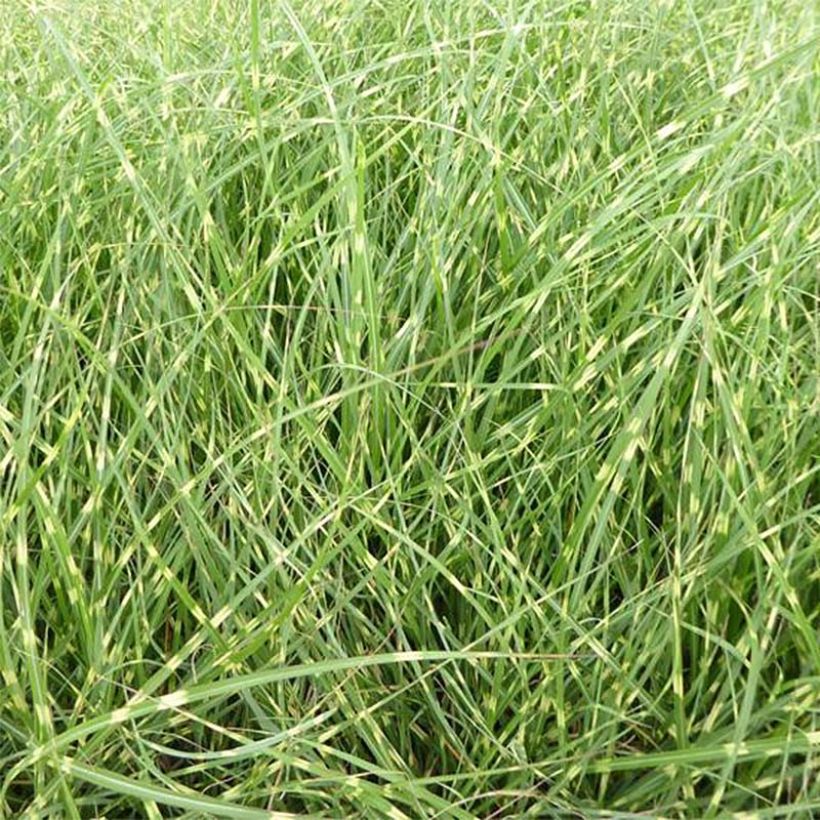

Flowering
Foliage
Plant habit
Botanical data
Miscanthus
sinensis
Strictus Dwarf
Poaceae
Eulalia, Porcupine Grass, Chinese silver Grass, Maiden Grass, Zebra Grass, Susuki Grass
Cultivar or hybrid
Other Miscanthus
Planting and care
Miscanthus sinensis 'Strictus Dwarf' thrives in warm exposures and healthy, rich, deep, well-drained soil that remains moist in summer. This plant tolerates occasional drought if planted in deep soil. Cut back the foliage to ground level in early spring, after the strongest frosts have passed. For container planting, choose a large pot (minimum 30L), filled with a fertile, well-draining, and flexible growing medium. A mixture composed of 20% good garden soil, 20% mix of draining elements (pumice or gravel or coarse river sand), and 60% horticultural compost is ideal. Apply well-decomposed compost once or twice a year (end of winter and autumn) or slow-release fertiliser.
Planting period
Intended location
Care
-
, onOrder confirmed
Reply from on Promesse de fleurs
Late flowering perennials
Haven't found what you were looking for?
Hardiness is the lowest winter temperature a plant can endure without suffering serious damage or even dying. However, hardiness is affected by location (a sheltered area, such as a patio), protection (winter cover) and soil type (hardiness is improved by well-drained soil).

Photo Sharing Terms & Conditions
In order to encourage gardeners to interact and share their experiences, Promesse de fleurs offers various media enabling content to be uploaded onto its Site - in particular via the ‘Photo sharing’ module.
The User agrees to refrain from:
- Posting any content that is illegal, prejudicial, insulting, racist, inciteful to hatred, revisionist, contrary to public decency, that infringes on privacy or on the privacy rights of third parties, in particular the publicity rights of persons and goods, intellectual property rights, or the right to privacy.
- Submitting content on behalf of a third party;
- Impersonate the identity of a third party and/or publish any personal information about a third party;
In general, the User undertakes to refrain from any unethical behaviour.
All Content (in particular text, comments, files, images, photos, videos, creative works, etc.), which may be subject to property or intellectual property rights, image or other private rights, shall remain the property of the User, subject to the limited rights granted by the terms of the licence granted by Promesse de fleurs as stated below. Users are at liberty to publish or not to publish such Content on the Site, notably via the ‘Photo Sharing’ facility, and accept that this Content shall be made public and freely accessible, notably on the Internet.
Users further acknowledge, undertake to have ,and guarantee that they hold all necessary rights and permissions to publish such material on the Site, in particular with regard to the legislation in force pertaining to any privacy, property, intellectual property, image, or contractual rights, or rights of any other nature. By publishing such Content on the Site, Users acknowledge accepting full liability as publishers of the Content within the meaning of the law, and grant Promesse de fleurs, free of charge, an inclusive, worldwide licence for the said Content for the entire duration of its publication, including all reproduction, representation, up/downloading, displaying, performing, transmission, and storage rights.
Users also grant permission for their name to be linked to the Content and accept that this link may not always be made available.
By engaging in posting material, Users consent to their Content becoming automatically accessible on the Internet, in particular on other sites and/or blogs and/or web pages of the Promesse de fleurs site, including in particular social pages and the Promesse de fleurs catalogue.
Users may secure the removal of entrusted content free of charge by issuing a simple request via our contact form.
The flowering period indicated on our website applies to countries and regions located in USDA zone 8 (France, the United Kingdom, Ireland, the Netherlands, etc.)
It will vary according to where you live:
- In zones 9 to 10 (Italy, Spain, Greece, etc.), flowering will occur about 2 to 4 weeks earlier.
- In zones 6 to 7 (Germany, Poland, Slovenia, and lower mountainous regions), flowering will be delayed by 2 to 3 weeks.
- In zone 5 (Central Europe, Scandinavia), blooming will be delayed by 3 to 5 weeks.
In temperate climates, pruning of spring-flowering shrubs (forsythia, spireas, etc.) should be done just after flowering.
Pruning of summer-flowering shrubs (Indian Lilac, Perovskia, etc.) can be done in winter or spring.
In cold regions as well as with frost-sensitive plants, avoid pruning too early when severe frosts may still occur.
The planting period indicated on our website applies to countries and regions located in USDA zone 8 (France, United Kingdom, Ireland, Netherlands).
It will vary according to where you live:
- In Mediterranean zones (Marseille, Madrid, Milan, etc.), autumn and winter are the best planting periods.
- In continental zones (Strasbourg, Munich, Vienna, etc.), delay planting by 2 to 3 weeks in spring and bring it forward by 2 to 4 weeks in autumn.
- In mountainous regions (the Alps, Pyrenees, Carpathians, etc.), it is best to plant in late spring (May-June) or late summer (August-September).
The harvesting period indicated on our website applies to countries and regions in USDA zone 8 (France, England, Ireland, the Netherlands).
In colder areas (Scandinavia, Poland, Austria...) fruit and vegetable harvests are likely to be delayed by 3-4 weeks.
In warmer areas (Italy, Spain, Greece, etc.), harvesting will probably take place earlier, depending on weather conditions.
The sowing periods indicated on our website apply to countries and regions within USDA Zone 8 (France, UK, Ireland, Netherlands).
In colder areas (Scandinavia, Poland, Austria...), delay any outdoor sowing by 3-4 weeks, or sow under glass.
In warmer climes (Italy, Spain, Greece, etc.), bring outdoor sowing forward by a few weeks.

































